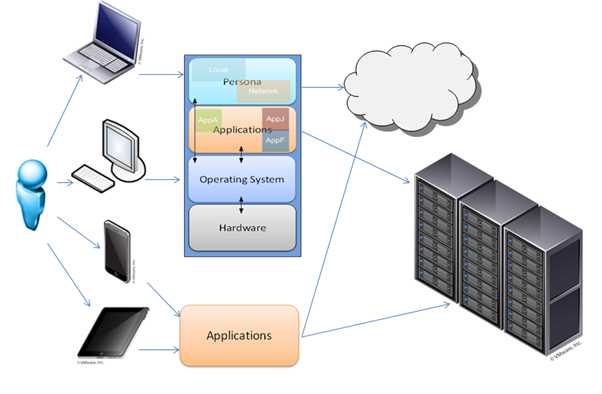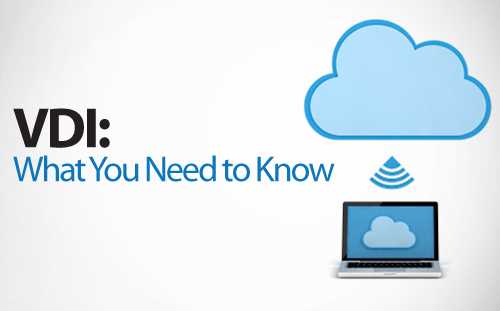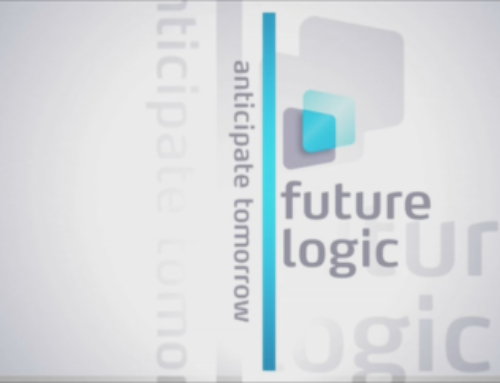Desktops computers or colloquially FAT Clients are an awful, wasteful way to enable workforce productivity. With failing disk drives, space consumption, security defeating features, and the never ending upgrades to cater for the endless specification creep of software, people with larger desktop fleets have had no other choice but to look to alternatives.
Many companies (and vendors) have shouted Bring-Your-Own-Device (BYOD) as the saviour as businesses could offload the cost of those end point devices to the very people they require to be productive.
BYOD has luckily had a slow uptake and has really only been seen in higher level managers who have pay packets that allow the latest and great X1 Carbon or Mac Book Pro’s. Your typical task worker or admin however would be hard pressed to buy even an entry level $700 Laptop to do their work every 3 years.
The added complexity is that as the device is owned by the employee, how much really can the employer dictate the security policies that that device should endure. Or in many cases with the employer not being security compliance experts assume that IT has taken charge of this already and rolled out an effective BYOD security policy.
The lack of security policy is often not discovered until IT approach the business for endpoint device management software which is often the step between the fat client and the total cost reduction of offloading the endpoint cost to the user.
It’s not strange that BYOD isn’t massive in the workplace outside mobiles and high-end Endpoints for executives.
So if not BYOD then what? Finally, VDI has come of age.
VDI or Virtual Desktop Infrastructure takes the users’ desktop environment and makes it accessible on the network from any other VDI capable device.
Essentially the desktop environment is no longer fixed to one desktop endpoint! An “instance” of the desktop experience resides on a server hardware where the client acts as a window to that particular environment from anywhere in the network.
The great advantage here is not only can you have a persistent workspace from any device but you can be productive out past the borders of your own network, into any branch office, home, or even your local watering hole.

On a Side Note: Interestingly VDI or technologies like this have been around since the 60’s. Originally software resided on a mainframe and was accessed via a “dumb terminal”. The shift in the 80’s from this method to FAT clients was the result of the rise of x86 architecture which enabled cheap processing at a smaller footprint resulting in the move away from the space consuming mainframe and the minicomputers of the day.
So VDI sounds great, it can be an amazing way to solve many problems around desktop fleets…but why hasn’t it taken off?
It is gaining momentum with even mid-tier and small enterprises in Australia having great success with their VDI implementations
“…our teams have the information they need to inform the budget and other key policy issues. It doesn’t matter whether they are at their desks or travelling, the tools are always there so the job can be done without delay.” — Ricardo Alberto, CIO Federal Department of Treasuries (Desktop Fleet: 850)
VDI however, has not always been the silver bullet to desktop fleet issues.
The unprepared will quickly run into Boot Storms, Performance issues, CAPEX requests and angry users being moved off old_faithful_boat_anchor complaining their applications are “clunky” or “not as responsive as it used to be”.
So what’s changed now that has me claiming VDI has come of age?
First and foremost, the software for serving VDI has become more robust, efficient and cost effective.
VMware’s Horizon View is now in its 6th edition and the rival Citrix Xen Desktop is now in its 4th edition.
Both are effective in achieving a unified desktop session to any device but there are a number of considerations to be made before choosing your software. It is important to consider what needs upgrading in my environment to cater for the number of desktop sessions being moved to the back-end infrastructure:
- Break your users up into the following:
- Task/Admin users – Typical basic/light weight excel, word, outlook work
- Knowledge users – Intensive excel, outlook, Accounting and gruntier tasks
- Power Users – These are strictly used for Devs, CAD/CAM or higher end applications that require ram amounts over 8Gb, multiple cores and even GPU hardware.
Write down the memory available on each PC they currently operate on, and for A & B times the total amount by 0.5. This is because majority of these users will use less that this and you will never need to allocate the full amount to each user.
- Will your existing Server and Storage (SAN) infrastructure have enough disk capacity in terms of volume and performance to provide a suitable user experience?
- Each A&B user will need on average 75 IOPs per session.
- Depending on the Power user apps this is where you may need to size the exact replica of the workstation.
- Network switching Capacity
- Early morning booting as user’s log on can cause a massive strain on the backend infrastructure and network – Do you have 10Gbe Backhaul should you have 100+ users moving to VDI?
These were the old considerations of VDI. You would have to vastly scale out your existing infrastructure and in many cases kill your ROI if your current platform is becoming end of life and the forklift replacement is on the horizon.
Next Article we’ll look at potential solutions to avoid these pitfalls and how to address the VDI concept better

Contact Us Today





